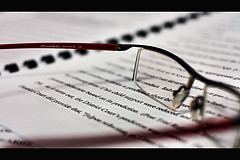 The lens for a nearsighted person is a concave lens. Nearsightedness happens because of the excessive light ray’s convergence by the eye lens. This could be corrected by a diverging lens or concave lens. In nearsightedness or myopia, the eyeball is longer than it should be for ideal vision. The errors could lead to focus of image in the wrong place, which is in the back of the retina. A concave nearsighted lens bends an incoming light so the focus hits the retina.
The lens for a nearsighted person is a concave lens. Nearsightedness happens because of the excessive light ray’s convergence by the eye lens. This could be corrected by a diverging lens or concave lens. In nearsightedness or myopia, the eyeball is longer than it should be for ideal vision. The errors could lead to focus of image in the wrong place, which is in the back of the retina. A concave nearsighted lens bends an incoming light so the focus hits the retina.
Concave lenses can also correct errors in systems of lenses designed to focus light on a certain location. By adding lenses to a system, engineers could change the area where the rays of light end up by bending the light outward or inward.
In the concave mirror, the light reflects off various points on the glass means that rays will bounce to the center. This means that if the image reflected is far enough, the light that comes from the top of the object is far enough and the mirror will flip the image over. You can check this out by looking on the concave side of the spoon. If you are far from the spoon, your image is upside-down but if you move closer, your image will be right-side up.